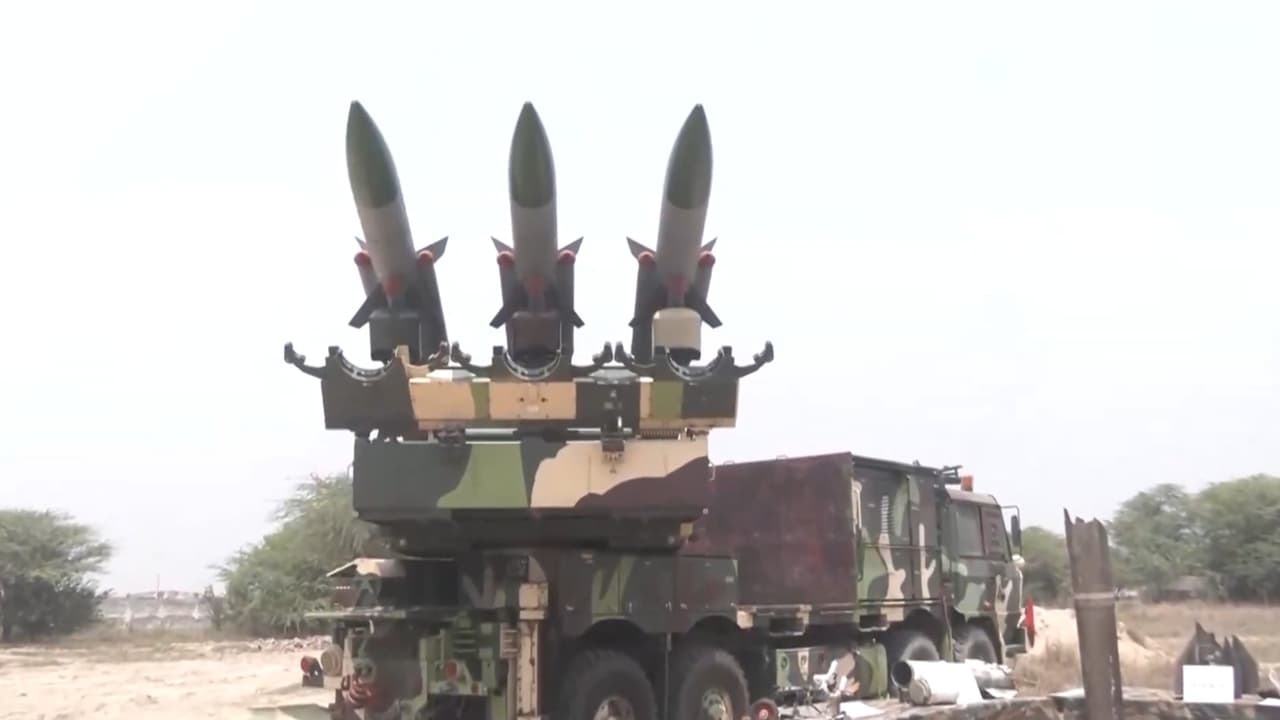India’s ability to forge a layered yet unified air defence shield across its theatres is expected to be the deciding factor of its success in safeguarding airspace and ensuring operational superiority.
The transformation of India’s military into a theatre command structure is set to redefine how the nation organises, deploys, and fights wars in the 21st century. The question of air defence integration is at the heart of this change. Precision missile strikes, drone swarms, and electronic warfare (EW) have become the defining features of modern conflicts. As such, India’s ability to forge a layered yet unified air defence shield across its theatres is expected to be the deciding factor of its success in safeguarding airspace and ensuring operational superiority.
Why Air Defence is Central to Theaterisation
The theatre command concept is built on jointness, where the Army, Navy, and Air Force operate under a single commander for a specific geographical or functional theatre. Unlike the current service-specific silos, theatre commands demand seamless integration of sensors, shooters, and decision-making chains. Air defence is particularly crucial because it cuts across all domains, whether defending forward Army positions, naval task forces, or critical infrastructure deep inside the mainland.
In a fragmented structure, air defence assets are deployed and controlled separately by each service, leading to duplication, gaps, and delays in response. Under theatre commands, however, air defence must become a common umbrella, ensuring that every radar, interceptor missile, and counter-drone system contributes to a single picture of the skies.
Building the Radar and Sensor Backbone
The first step in this integrated approach is a networked radar and sensor grid. India has invested heavily in long-range surveillance radars, indigenous Akashteer systems for ground-based air defence, and space-based surveillance programmes. The gap, however, is that these assets are still largely controlled at the service level.
To support theatre commands, India needs to shift to a composite Air Defence Command and Control (ADCC) network. Here’s what this would look like: Air Force radars track hostile aircraft and missiles, Army battlefield radars monitor tactical drones and artillery shells, and Navy shipborne radars provide maritime domain awareness.
Most importantly, all of these would be fused into one real-time common operating picture. The need of the hour is also for this network to leverage artificial intelligence (AI) for early warning and predictive tracking, giving commanders across theatres the ability to anticipate hostile actions instead of reacting late.
Missile Systems: A Layered Shield
As air defence modernisation in India takes strides towards a layered architecture, essential for theatreisation. The idea is to build multiple concentric rings of protection.
These include long-range exo-atmospheric interceptors like the Ballistic Missile Defence (BMD) programme, designed to neutralise ballistic missiles before they re-enter; medium-range systems such as the Indo-Russian S-400 Triumf, capable of engaging enemy aircraft, cruise missiles, and UAVs up to 400 km.
It would also include short-range and quick reaction systems like Akash-NG, Spyder, and indigenous QRSAMs for defending tactical formations, and point defence systems, including laser-based Directed Energy Weapons (DEWs) under development, to counter drones and precision-guided munitions.
The challenge for theatre commands is in ensuring that these systems are positioned based on joint threat assessments. A Western Theatre Command, for example, would require heavy deployment of counter-missile systems against Pakistan’s arsenal, while the Northern Theatre must focus on countering China’s long-range rocket forces and stealth aircraft.
Counter-Drone and Low-Cost Threats
Recent conflicts in Ukraine and West Asia have shown that cheap, massed drones can overwhelm even advanced air defence systems. India faces a similar threat across both the Pakistan and China fronts, as well as from non-state actors.
Due to this evolution of in modern warfare, all counter-drone systems, ranging from jammers and spoofers to laser weapons, must be fully integrated into the theatre model. In addition to that, they need to be decentralised down to brigades and naval task groups to make sure tactical units aren’t left vulnerable while the strategic grid focuses on high-end threats.
The Command and Control Imperative
Technology alone cannot ensure an effective shield. At present, several layers of decision-making delay response times between the first detection to when shooters are tasked. In a theatre model, air defence must be under a single chain of authority, cutting across services.
The proposed Air Defence Command will likely play this central role, but its success depends on how well it is integrated with theatre commanders. Ideally, every theatre must have an Air Defence Component Commander reporting both to the Air Defence Command and the Theatre Commander, ensuring unity of effort without compromising flexibility.
In the coming decade, as India comes eye-to-eye with the twin challenges of China’s missile-heavy doctrine and Pakistan’s hybrid warfare tactics, air defence is set to be the cornerstone of theatreisation. By building integrated shields across commands, India can ensure that its skies remain secure, its forces protected, and its deterrence credible in the era of high-speed conflict.
(Ashu Mann is an Associate Fellow at the Centre for Land Warfare Studies. He was awarded the Vice Chief of the Army Staff Commendation card on Army Day 2025. He is pursuing a PhD from Amity University, Noida, in Defence and Strategic Studies. His research focuses include the India-China territorial dispute, great power rivalry, and Chinese foreign policy.)
Disclaimer: The opinions expressed are solely those of the author and do not reflect the views or stance of the organization. The organization assumes no responsibility for the content shared.
